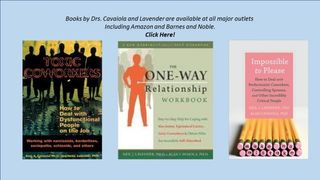Bias
Age Discrimination in the Workplace Part 2
Age discrimination in the American workplace continues to be problematic
Posted August 13, 2018

In a previous blog, I had written about age discrimination in the workplace. The blog primarily focused on the difficulties faced by older workers who are looking for work in the aftermath of a layoff or termination. In this blog, I’d like to focus on how age discrimination plays out for those who have jobs or who have been working at a particular company or organization for several years. Although it’s reasonable to assume that seniority has its advantages and perks, there are also downsides to being the experienced, grey-haired employee. Often, rather than being respected for their expertise and experience, the older employee may be viewed as someone who is “taking up space” or worse yet, someone who is taking a job that could be given to a younger, more energetic worker. In many instances, older employees may be getting higher salaries because of having accumulated many cost-of-living and performance-based pay increases over the course of several years. Sherri Edwards (2011) had written an article for Forbes in which she enumerates some of the attitudes that younger employees hold towards older employees. Here are some of their opinions associated with older workers: 1) rigid and stuck in their ways, 2) poor or failing health, including medical issues which impact attendance and productivity, 3) afraid of new technologies 4) slower to learn new concepts 5) years of highly developed opinions and unwillingness to consider or hear new ideas and 6) expensive: they demand higher wages. Given these opinions/attitudes, is it any wonder that younger workers perceive their older counterparts with general negativity and resentments. These attitudes may result in older employees being marginalized or essentially ostracized from the mainstream of workplace. This would be the case where the older employee is not included in important work-related decisions or delegation of important tasks. For some, marginalization can also take the form of being excluded from after- work parties or get-togethers. Naturally, it’s not realistic to think that everyone who works together will be friendly either at work or outside the workplace. However, there are organizations where there are definite “in-groups” and “out-groups” and it’s not unusual for “out-groups” to be based on age. A recent college graduate/family friend recently went on a job interview at a tech start up and instead of finding the usual office cubicle type of layout, instead she was greeted to an entirely open office space with tables, couches, comfy chairs. Much different than what one might expect. As her job interview began, this prospective young employee was told right from the start, “don’t worry, we don’t have any adults working here” (i.e. anyone over 30).
There are certainly older workers who do their fair share of the “heavy lifting” within the organization, but let’s face it, there’s also the proverbial “dead wood,” or those who seem to be putting in time until retirement. What makes this difficult is that if the elder statesman is not doing his or her share of the work, guess who it’s going to fall on? A friend of mine who was approaching retirement, used to refer to himself as a “2 x 4”… i.e. ”they can’t do anything to (2) me and they can’t do anything for (4) me.” So basically, there were no incentives to be more productive or engaged at work. However, for those who fall within the “dead wood” category, there are some things to consider if you want to avoid the ire and resentment of your younger co-workers. First, younger employees (I’ve especially seen this with millennials) place little value on the notion of “respect your elders” solely because of their age. Instead, millennials seem to base respect on achievement rather than on seniority or longevity. Second, the older worker needs to figure out ways they can contribute at work that are unique, that no other co-workers can do or perhaps have no interest in doing. Pontificating does not count as a “unique contribution”, no one wants to hear about the “good old days.” This will help to secure your place and value in the workplace. Third, learn new skills. This is not the time to rest on your laurels, so take an active role in keeping up with new developments and new skills. Fourth, try to refrain from hawking your past achievements. I used to work with someone who used to begin every sentence, in every department meeting with “Well when I was the managing supervisor….blah, blah, blah”. No one is interested in hearing about your past achievements—better to stick to projects you’re working on at present or current achievements. There’s a lot of power in humility. The most accomplished colleagues I’ve worked with often do the least self-promoting.
In Tad Friend’s article “Getting on: Why ageism never gets old” which appeared in the Nov. 20, 2017 issue of The New Yorker he points out that ageism has become pervasive in industrialized countries. In 2000 (in the U.S.) 12.8 percent of those over 65 were working, in 2016 that percentage was up to 18.8 percent. There are probably several factors that account for people working longer, e.g. uncertainty of the future of healthcare, the rising costs of college tuition for kids and grandkids, and many suffered huge losses in their retirement plans during the 2008 stock market collapse which they are only recently regaining, but fear another collapse is in the offing. Then there are those who enjoy their jobs, feel fulfillment from their job or profession or may fear what retirement might look like especially when one’s work or professional identity no longer exists.
Industrialized countries don’t have a great track record when it comes to valuing older adults. Although, according to Tad Friend, ageism tends to be very much a Western and not Eastern phenomena. Yet, non-industrialized don’t have such a great track record either and many “forsake their elderly”. Such is the case with the Marind Anim of New Guinea who bury senescent elders alive. Or the Niue of Polynesia who view the elderly as “nearly dead” and feel that they “threaten the barriers between worlds." I wonder if they’re referring to Larry King?
I remember seeing a horrible sci-fi film back when I was in college, called Soylent Green which starred Charlton Heston and Edward G. Robinson. Set in the year, 2020 (wow, only two years to go), the earth has been depleted of all it’s natural resources and means to produce food (i.e. obviously there are no Whole Foods or Shake Shacks in the future). So, in response to overpopulation and food shortages, they have this company, Soylent Industries which claimed to make food out of plankton. But towards the end of the film, Charlton Heston discovers that Soylent Green has come up with process by taking the elderly and makes them into biscuits called…soylent green. By the way, this is not the kind of movie you want to bring your grandparents to. Towards the end of the movie, the lovable Edward G. Robinson is walking into the food processor to be turned into soylent green and I think Charlton Heston shows up and has one of those “damn dirty apes” moments when he witnesses Edward G. Robinson walking into the food chipper, only this time, he discovers that “soylent green is people”. As you can imagine, Soylent Green didn’t achieve the critical acclaim of Planet of the Apes. Hey, it beats being buried alive.

References
Friend, T. (2017, Nov. 20) Getting on: Why ageism never gets old, The New Yorker


